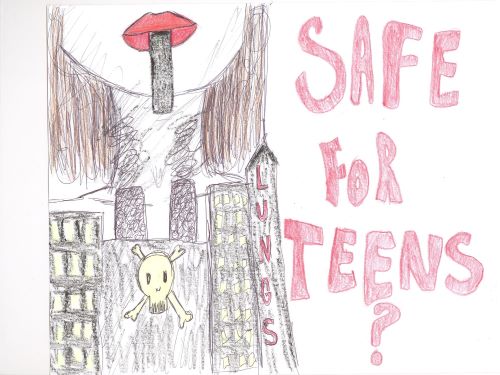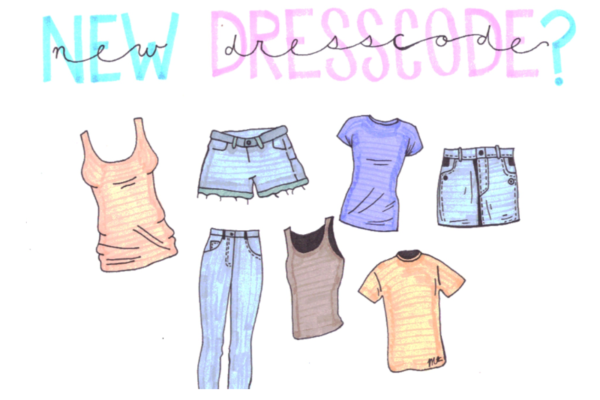Millions of teens are addicted to vaping; who’s to blame?
After the extremely public and multiple anti-smoking movements throughout the last 30 plus years, it seemed as though nicotine addiction could possibly, slowly die out with the younger generations. In fact, since their earliest formative years, these same children have been informed about the dangers of smoking nicotine, and to avoid nicotine at all costs. That is, until they were introduced to vaping products.
Although e-cigarettes were first invented during the 1960’s, they didn’t start to become popular until the 2000’s. For many adults addicted to nicotine, they wanted a safer alternative to actual cigarettes, and vaping products were advertised as such. As e-cigarettes and other vaping products were used by more and more people, these products began falling into the hands of youth.
And, while adults thought this was their miracle cure to end an addiction, they were wrong. According to the National Library of Medicine, when discussing vaping products such as Juul, it was found that a regular Juulpod contains about 40 milligrams of nicotine, which is about equivalent to an entire pack of cigarettes.
Once teens discovered vaping products, they figured out that schools could be a socially acceptable, secure and secretive place to vape, since there are many teachers who do not recognize the product and the smell is difficult to detect.
But, when the COVID pandemic began, students weren’t in school, they were at home more, and they had less opportunity to vape. And, since the younger generation primarily vapes socially, there was a large decline of teen vaping during the year 2020. That year, the FDA also reported that the percentage of high school students who vape dropped to 20 percent, while the percentage was at 28 percent in 2019.
This year though, now that students have returned to school, it was reported by the Food and Drug Administration (FDA) that more than two million American middle school and high school students were once again using e-cigarettes. Even though teen vaping has declined some recently mostly because adults in the school setting are on to the problem, officials are still concerned about the large number of students who vape without understanding or realizing the consequences. Experts have been trying to uncover why younger children have become so addicted to vaping products, and it’s believable that companies, such as Juul, are preying on this generation.
Until recently when the FDA called them out, vape companies have been using flavored products to entice a younger demographic. Their “candy-like” flavors weren’t only addicting to adults, but it was also addicting to young teens.
According to Adam Leventhal, director of the USC Institute for Addiction Science, a representative of USCNews.com, not all children who try e-cigarettes become frequent users, but the added flavors to the product provide more of an incentive to continue vaping.
In order to work against that incentive, flavored nicotine products were federally banned in 2020. However, experts believed that this did little to mitigate the damage, since teens were already addicted to the product anyway.
This year alone, 85 percent of teens who reported that they vaped also admitted that they use flavored products, even after the federal ban, according to the Center for Disease Control (CDC).
Because of the exploitative tactics of vaping companies in order to take advantage of the younger generation, there are now millions of teens suffering with nicotine addictions in the United States alone. The federal government, and the FDA, have taken the responsibility of regulating these products heavily to try to control the damage that companies have done to the youth.
Companies like Juul, however, do not admit that they had any intention for their products to appeal to children, and they avoid blame for the millions of children now hooked. According to a Juul spokesperson, their marketing tactics were never meant to appeal to youth, and they strongly discourage teens using their products.
Experts also worry that if the government keeps cracking down on vape products in order to protect teens, it could do more harm than good for the adults who are trying to quit consuming nicotine.
According to Amy Fairchild, Dean of the Ohio State University College of Public Health, leaving products like cigarettes and other combustible nicotine products on the market, while restricting access to less harmful vaping products can be negative for adults trying to quit. So we have to wonder if this becomes a situation in which no one wins.
However, even if these vape products can help adults, it’s still vital for the federal government to focus on making sure that today’s youth is safe no matter what. Besides, regulations would still ensure that these vape products will still be available for adults, it would just make it much harder for children to be able to access, including zero advertising toward children. But then, how exactly would that work and become effective for both adults and teens?
Perhaps the government should prioritize the protection of teens so that the epidemic of teen vaping can be defeated for good.
Vaping companies have done severe damage to this nation’s youth, and have introduced nicotine addictions to the younger generation. They are very much responsible for this issue that they helped create, and it is now up to the federal government to put restrictions on vaping products, and to punish these vaping companies in any way that they see fit.






